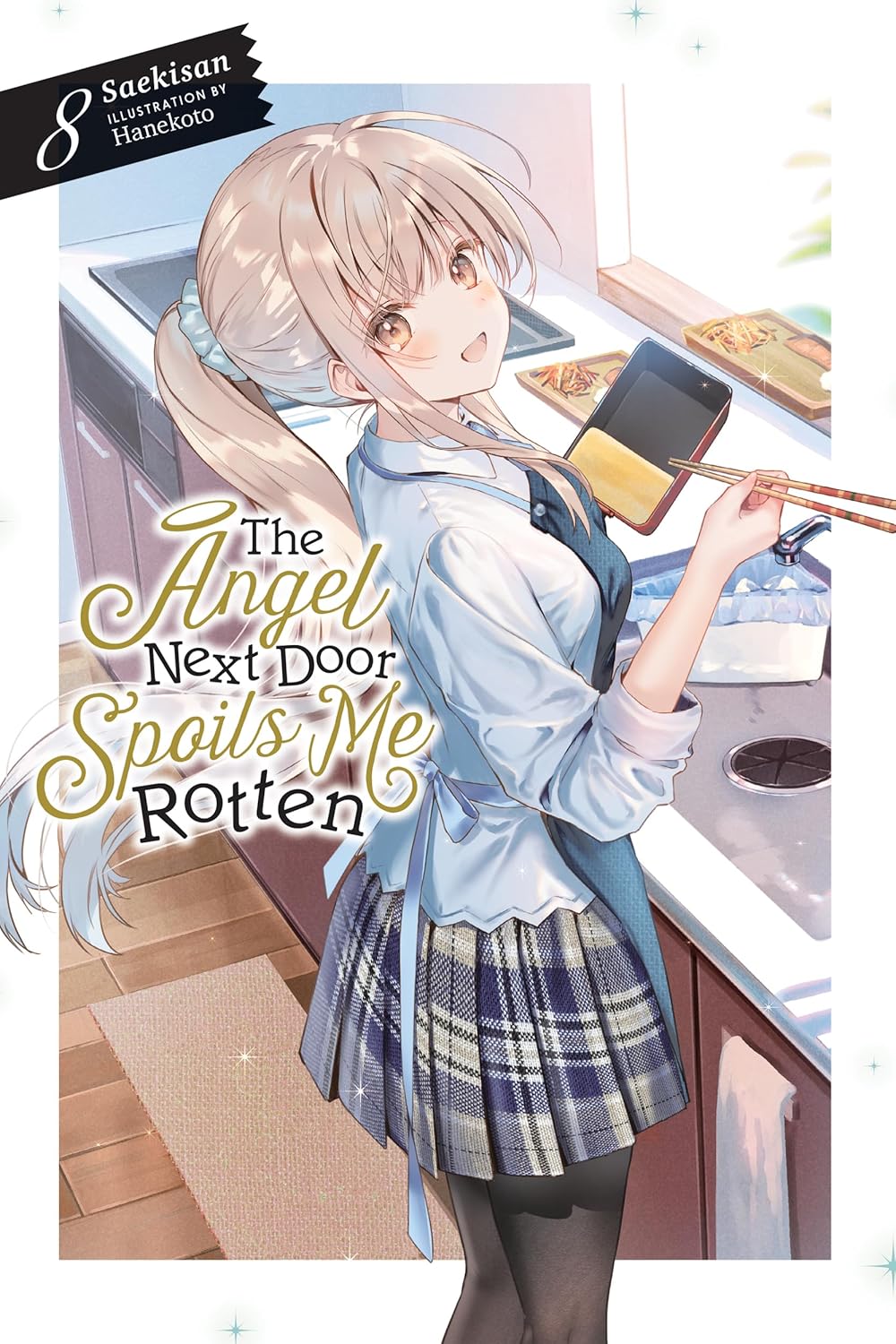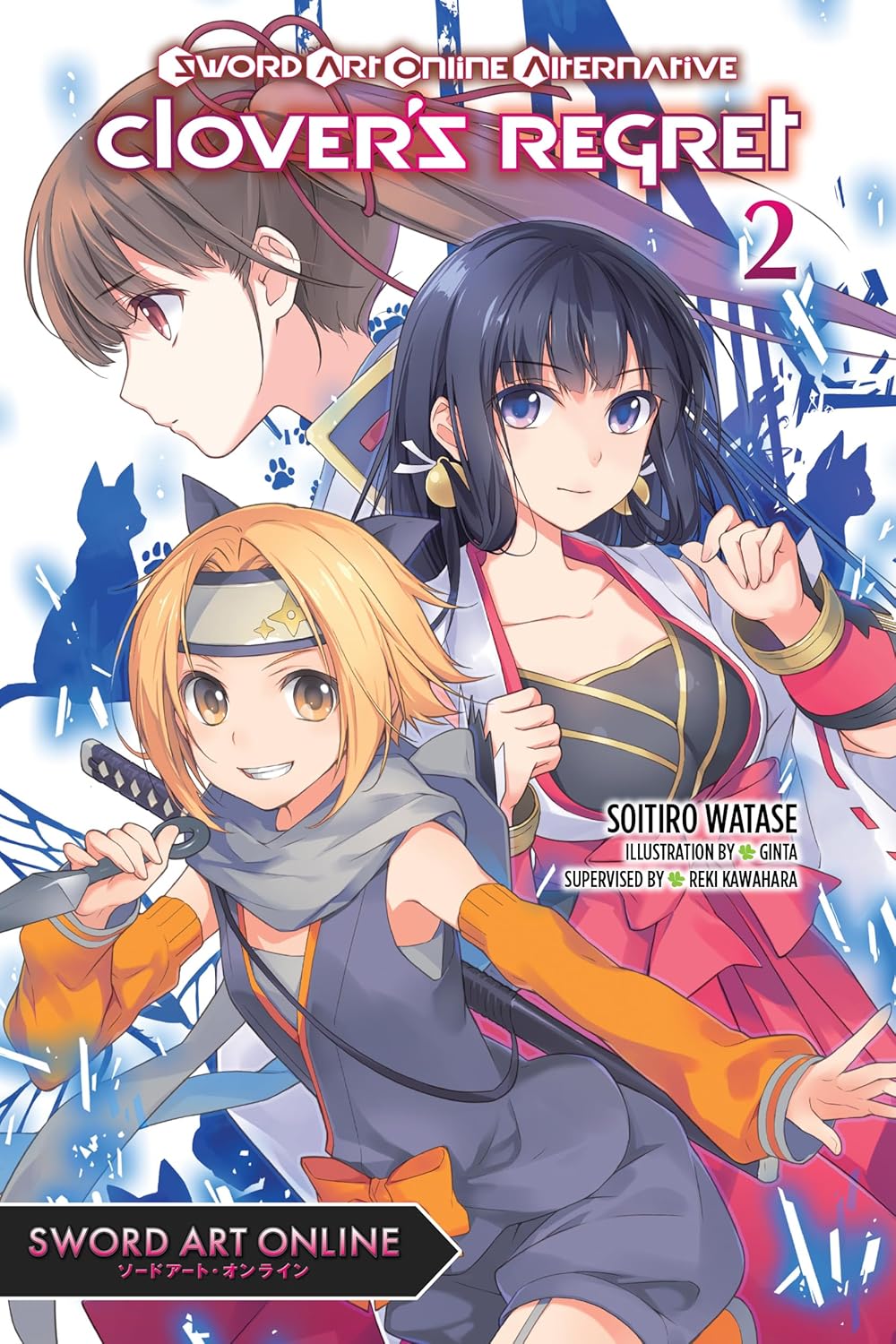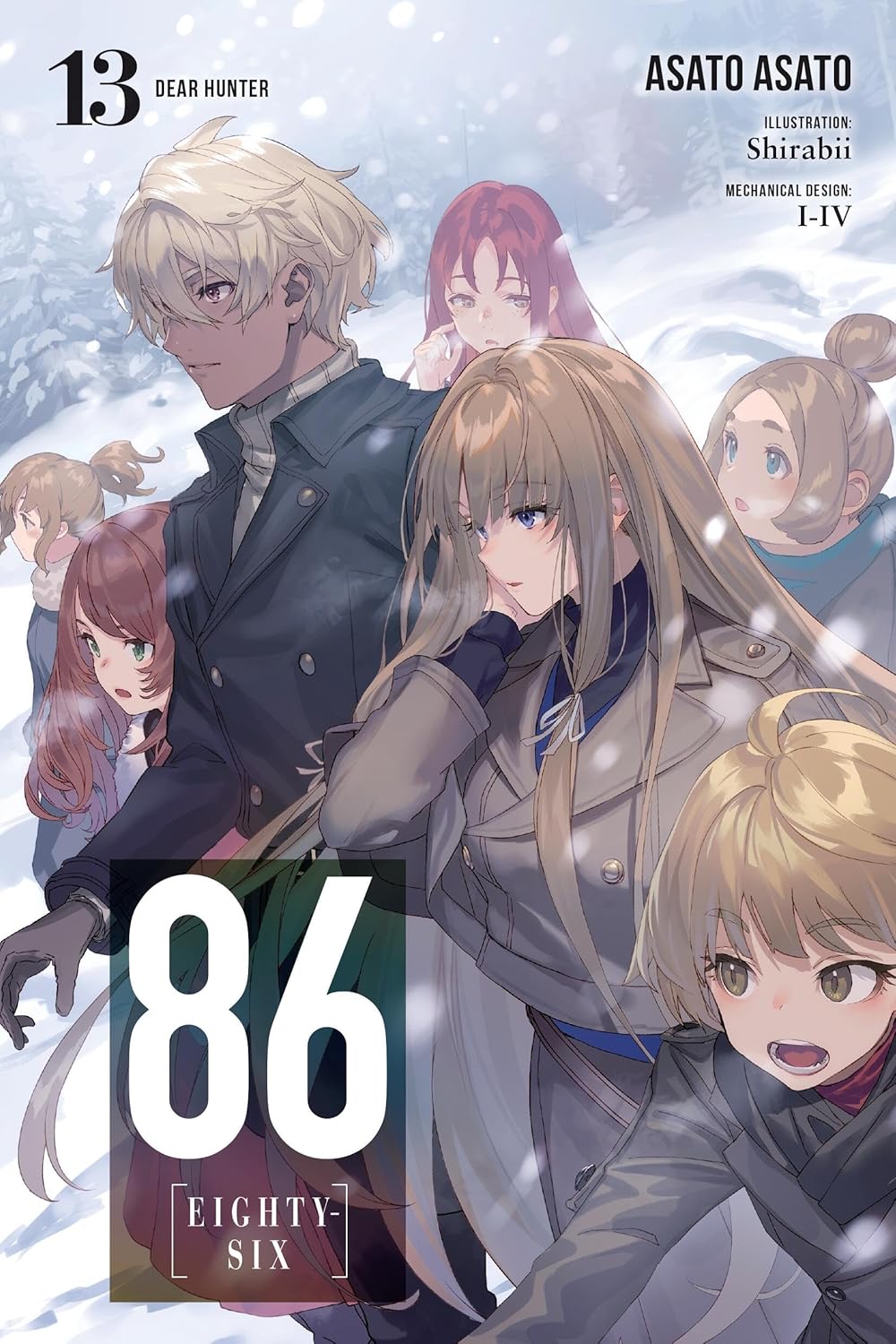By Saekisan and Hanekoto. Released in Japan as “Otonari no Tenshi-sama ni Itsu no Ma ni ka Dame Ningen ni Sareteita Ken” by GA Bunko. Released in North America by Yen On. Translated by Nicole Wilder.
The author, I get the sense, is not only well aware of the reputation that this series has for purity to the point of ridiculousness, but positively revels in it. The start of this volume has Mahiru indicate that she’ll let Amane do anything he wants to her, and both times the closest we get to actual sex is hickeys. Indeed, the joke – both at the start and the end – is that everyone else, including Mahiru, wants something more (never stated, of course, due to pure pureness but implied with her getting very red when he talks about lying in her lap – the last time he did that he was facing towards her, so the implication is there). Amane is made of sterner stuff, though, and he knows very well that the moment that he lets go of his self-control and allows himself to do what he wants with Mahiru, she will somehow immediately be pregnant and possibly homeless. So for now, hickeys it is.
So yes, Amane and Mahiru are now sleeping together. By which I mean she’s staying the night in his apartment, and they sleep in his bed, but again, hickeys is as far as we go. And they’re not even visible hickeys. In the meantime, though, Amane has the future in mind. He wants to live with Mahiru forever, and that means marriage. His parents, who drop by to visit and embarrass the hell out of their son, not in that order, say that they will he,lp with whatever future plans he has – they know he tries to take everything on himself – but he wants to buy the ring with his own money. As such, he asks muscle fangirl classmate Ayaka to help find him a part-time job, and she hooks him up at a cafe her aunt runs for wealthy older customers – one where he can work as a waiter/barrista. That said, Mahiru’s not allowed to see him at work. Yet.
The final scene in the book is essentially the continuation of the first, showing off that them being married is just a matter of a registration – as far as their behavior is concerned, they may not be having sex, but in all other respects they’re soulmates. We meet the co-workers at Amane’s cafe, and they reminded me of the sort of eccentric personalities you might find in some other light novel series, where the childhood friend pines without ever being noticed. But Amane and Miharu are those types as well. In any other light novel, they’d be minor characters, the schmoopy couple who put everyone else in the class to shame and are always shamelessly flirting. Of course, these two flirt without realizing it – even to each other, which can get hilarious.
If you’re waiting for the sex, I’d wait till the end of the series, and get very angry then, as I suspect it won’t be there either. If you’re waiting for the cuteness and the syrupy sweetness, it’s all over this volume.


